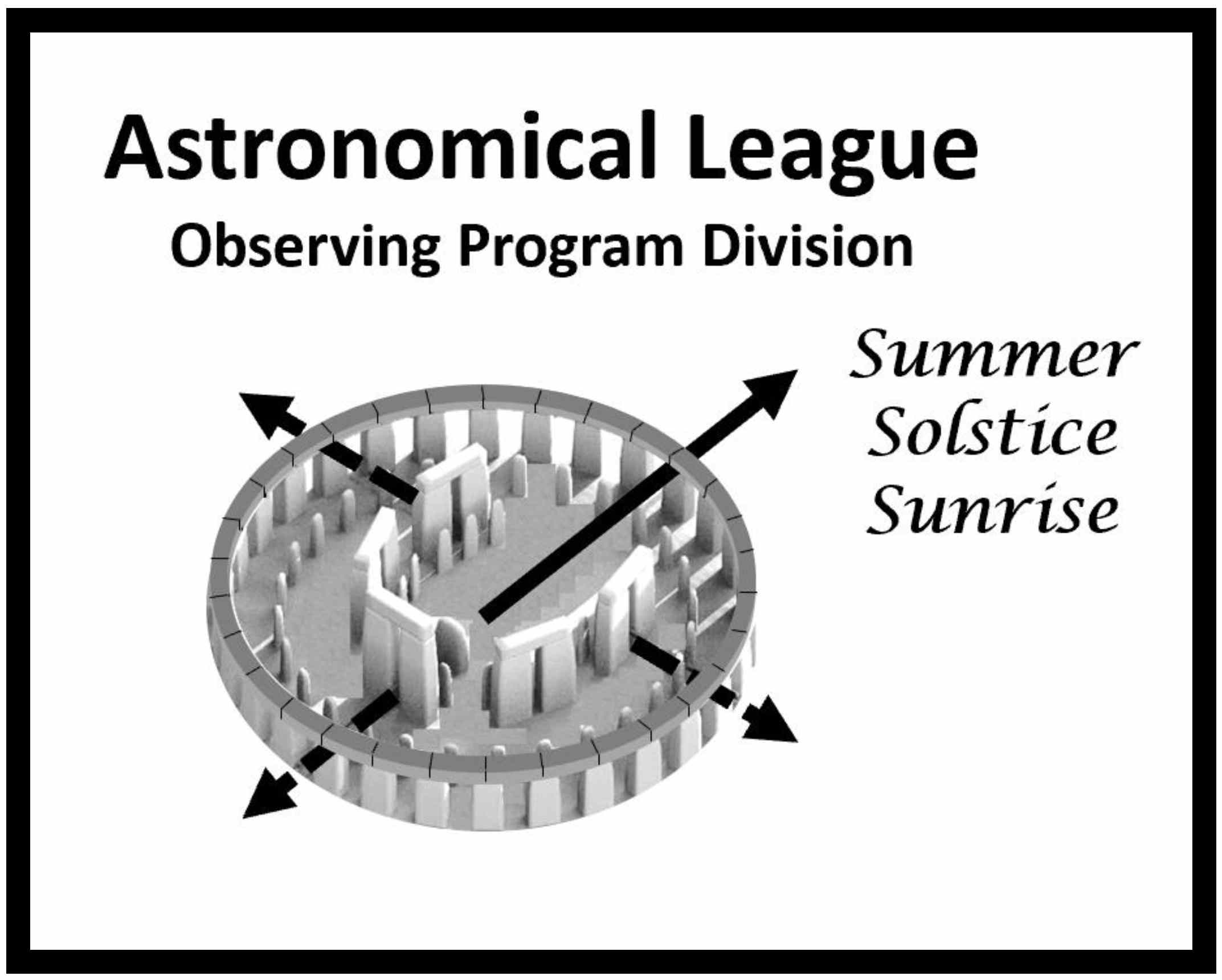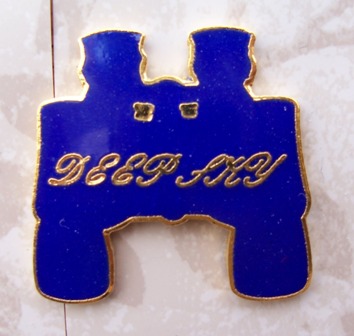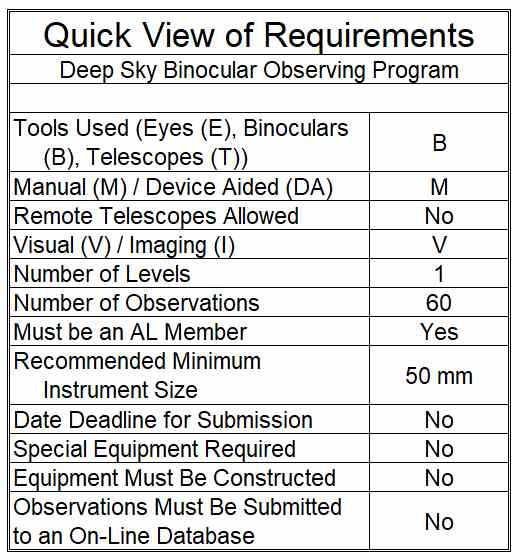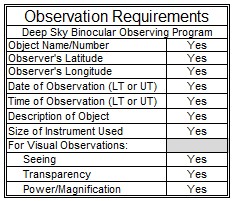Deep Sky Binocular Observing Program Coordinator:Cindy La Russa |
  |
IntroductionWelcome to the Astronomical League’s Deep Sky Binocular Observing Program. The Deep Sky Binocular Observing Program is a list of sixty selected non-Messier objects and picks up where the Binocular Messier Observing Program leaves off. The purpose of the Deep Sky Binocular Observing Program is not to put your observing skills to the test by including the toughest objects observable with binoculars, but to allow you to observe and enjoy sixty more of the most beautiful objects in the heavens: objects other than those discovered by Charles Messier. Just because the Deep Sky Observing Program comes after the Binocular Messier Observing Program, doesn’t mean you have to do your Messier observations before your Deep Sky observations. However, it is recommended that you get your Binocular Messier Certification first, before the Deep Sky Certification since, let’s face it, Messier has most of the good (easy) objects. Even though the sixty objects in the Deep Sky Observing Program are among the best objects for small binoculars, it doesn’t mean that they are all easy. For some of the objects, you will have to go to a good dark sky site, on a clear night with good seeing, and then observe those objects at the meridian for best results. But luckily this is easy to do with binoculars since they are so portable. All objects in the Deep Sky Observing Program were observed with 7X50 Orion Explorer binoculars retailing (at the time) for around $117.00. For our northern observers, no object on the list is below minus 35 degrees declination, which is the declination of the most southerly Messier object, M7. |
 |
Background InformationTo qualify for the Astronomical League’s Deep Sky Binocular Certificate and pin, you need only be a member of the Astronomical League, through either an affiliated club or as a Member at Large, and observe the sixty selected objects using only binoculars. Any pair of binoculars may be used, but those with objectives between 50mm and 80mm in diameter are recommended. To record your observations, you may use log sheets similar to those found in the back of the Astronomical League’s manual Observe: A Guide to the Messier Objects or any other log sheet of your choosing provided that all required information is logged. |
 |
Definition of Binoculars Allowed for Observations
The Astronomical League defines a binocular telescope as an observing device with two optical tubes and two eyepieces, where the eyepieces can be replaced with eyepieces of different focal lengths. “Bino-Viewers” have a single optical tube, but two eyepieces. “Bino-Viewers” and Binocular Telescopes may be used in any Observing Programs that are telescope-based. They may not be used in binocular programs.
Observing devices with two optical tubes and two eyepieces, where you cannot change the eyepieces, are binoculars. Binoculars may be used in any Observing Program requiring telescopes or binoculars. Most binoculars do not have sufficient magnification to replace telescopes.
Requirements and Rules
This certification is available to members of the Astronomical League, either through their local astronomical society or as members at large. If you are not a member and would like to become one, check with your local astronomical society, search for a local society on the Astronomical League Website, or join as a Member-at-Large .
To obtain this certification you must meet these rules:
Observe the 60 deep sky objects with binoculars and keep a record of your observations. Your notes must show:
- The object name
- Date and Time of observation (local or UT)
- Your Latitude and Longitude
- Seeing Conditions: Seeing and Transparency
- Type of binocular
- A short note describing your observation of the object
Submitting for CertificationOnly Members at Large need to mail their observing log to the Deep Sky Binocular Observing Program Coordinator. Members of an affiliated society may have their observations reviewed and approved by an officer of their astronomy club. This officer should then contact the Deep Sky Observing Program Coordinator with your information via email. The letter should specify the address to which the Certificate should be mailed. The certificate is suitable for framing.
|
 |
Be sure to include your name, mailing address, email address, phone number, affiliated society, and to whom the certification should be sent.
Upon verification of your submission and of your active membership in the Astronomical League, your recognition (certificate, pin, etc.) will be sent to you or to the awards coordinator for your society, as you specified. Your name will also appear in an upcoming issue of the Reflector magazine and in the Astronomical League’s online database. Congratulations. Good luck with your next observing challenge.
Deep Sky Binocular Observing Program Coordinator:
Cindy La Russa
PO Box 16274
Portal, AZ 85632
(509) 995-9885
larussa.cindy@gmail.com



